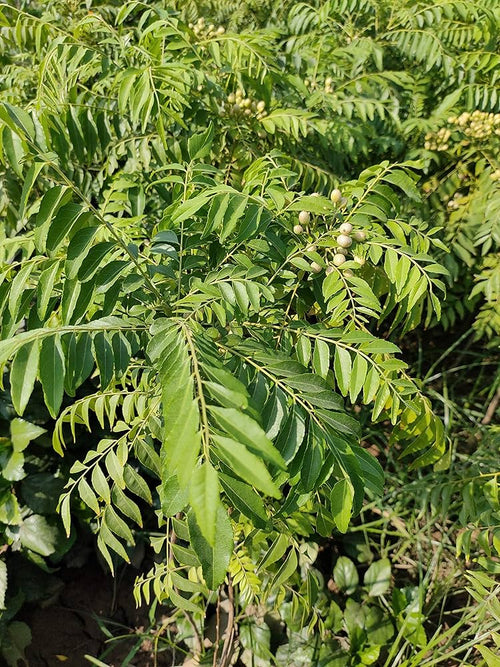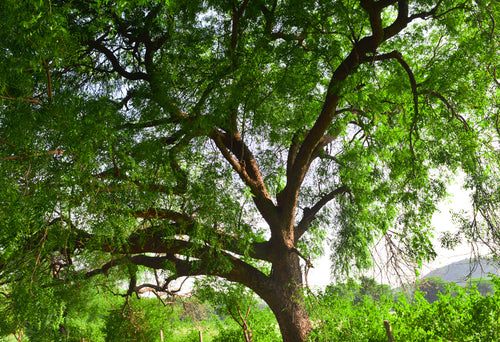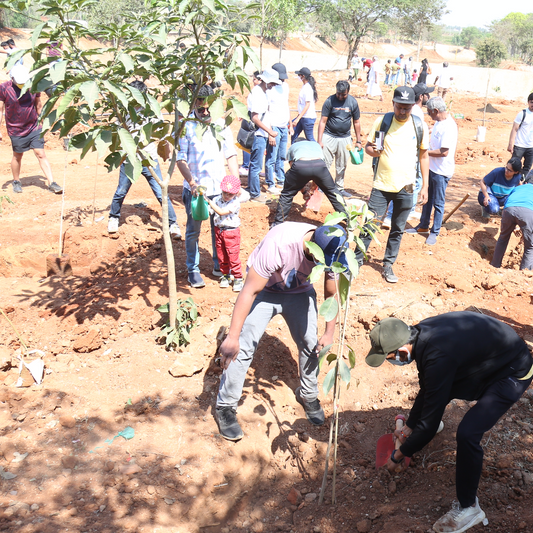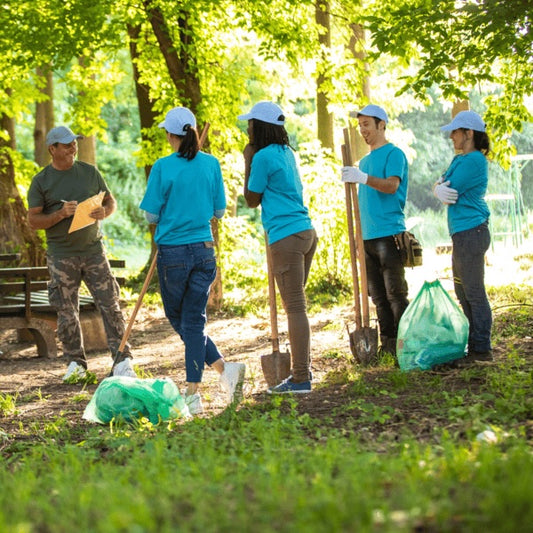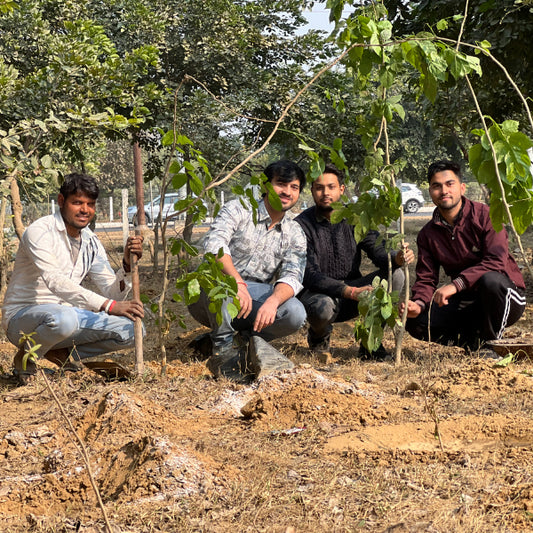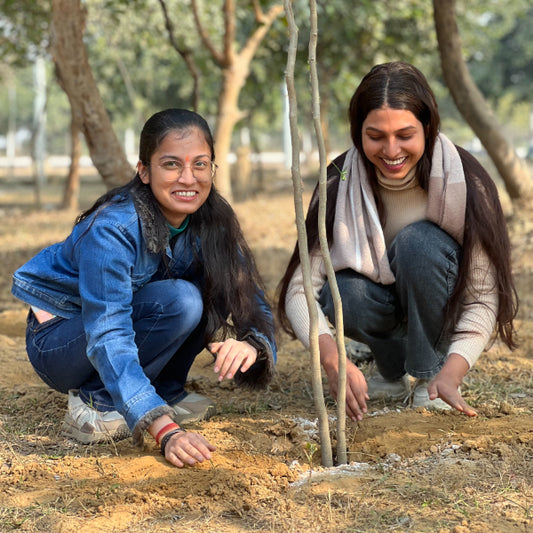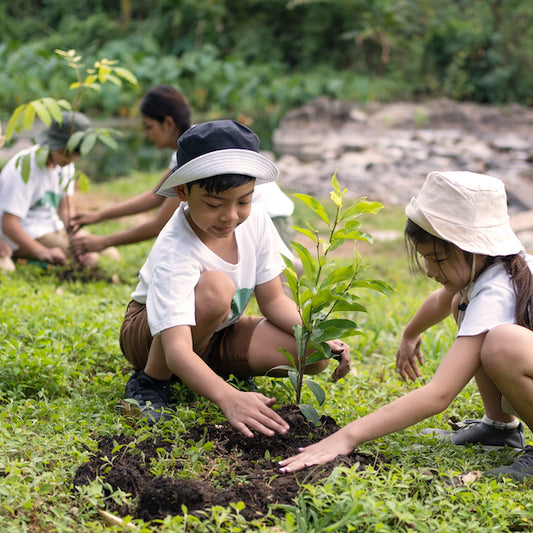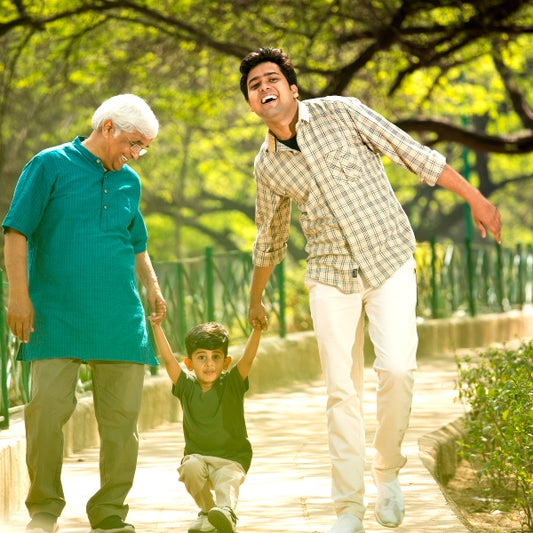Buds of Change: A Tribute to Earth by Shweta and Friends
On the occasion of Earth Day, Shweta Chanda and her friends came together with a shared purpose to give back to the planet that gives us so much. Embr Read more
Plantation Site Gallery
Project Update 1
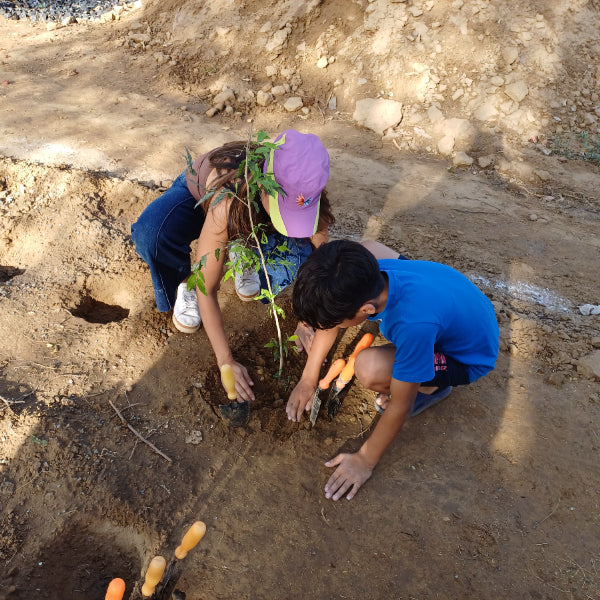

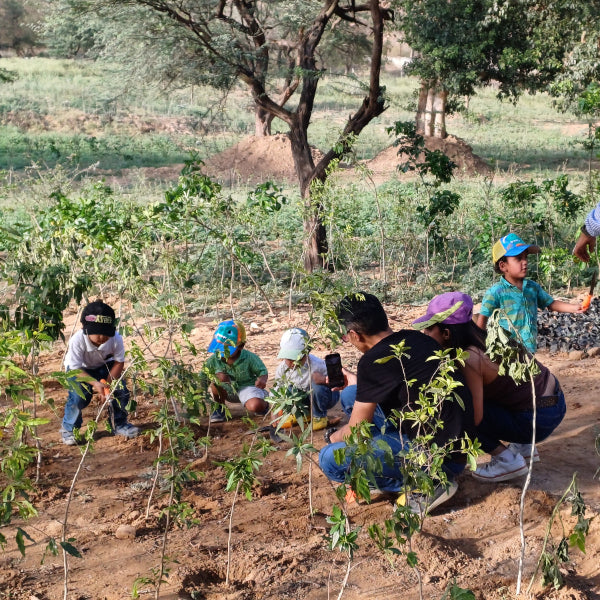
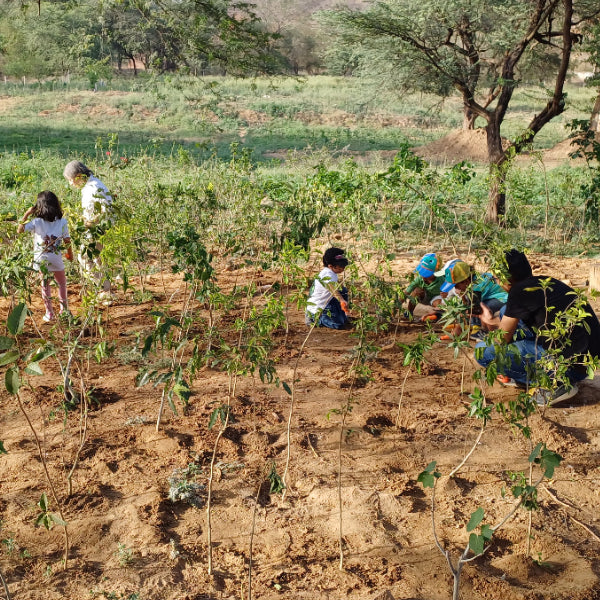
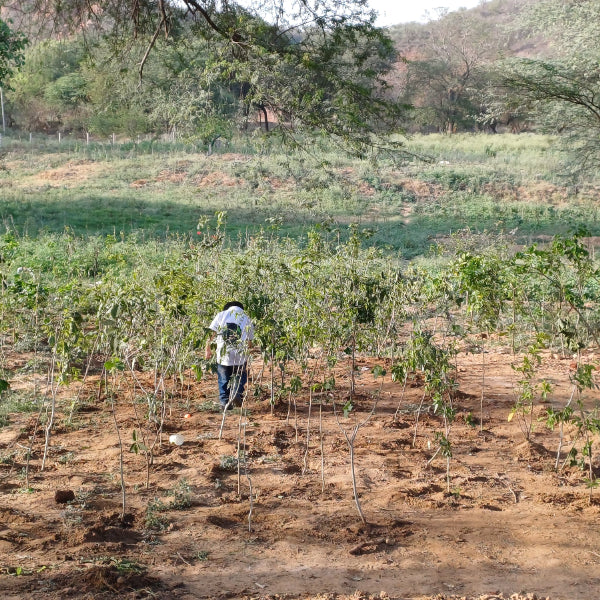

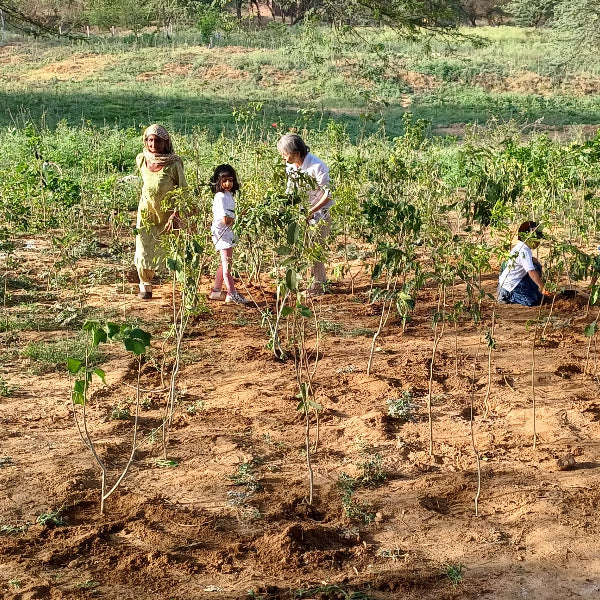
Digital Forest
Forest with 70 Trees planted
Buds of Change: A Tribute to Earth by Shweta and Friends
On the occasion of Earth Day, Shweta Chanda and her friends came together with a shared purpose to give back to the planet that gives us so much. Embracing the urban forest concept, the group embarked on a meaningful tree plantation drive aimed at creating a pocket of green in the heart of the city.
This was no ordinary plantation; it was a tree plantation with love, where every sapling represented a promise to nature. For Shweta and her friends, it was about planting love into the earth and growing memories that would flourish for years to come. Their initiative not only added life to the soil but also symbolized hope for cleaner air, richer biodiversity, and a healthier future for generations ahead.
This heartfelt effort was more than just planting trees; it was about cultivating awareness, inspiring community action, and reconnecting with nature. By choosing Earth Day for their plantation activity, Shweta and her friends reinforced the importance of environmental stewardship, proving that small groups of thoughtful individuals can indeed make a big impact.
Their urban forest stands today as a living tribute to Earth Day, a space where every leaf whispers gratitude, every root holds a memory, and every branch reaches out in harmony with nature.
Project Planning & Execution
No of Trees: 70
Plantation Location: Near Adarsh Ghoshala, Tikli Village, Gurgaon, Haryana 122101
Plantation Date: 22nd April 2025
Name of Species: Kachnar, Putrajeva, Neem, Sundar roopa, Conacorpus
Species Selection & Its Benefits:
For Shweta Chanda’s Earth Day urban forest initiative, the choice of tree species reflected a deep commitment to both environmental impact and cultural significance. The selection included Kachnar, Putrajeeva, Neem, Sundar Roopa, and Conocarpus, each chosen for their ability to thrive in urban conditions while contributing uniquely to the ecosystem. Kachnar, with its stunning orchid-like blossoms, adds vibrant color to cityscapes and supports pollinators, making it a beautiful and ecologically functional addition. Putrajeeva, an evergreen tree revered for its symbolism of blessings and protection, brings year-round greenery and resilience to urban spaces.
Neem, celebrated for its medicinal value and air-purifying qualities, serves as a natural shield against pollution and pests. Sundar Roopa, a graceful Sthala Vruksha, enriches the urban forest with its spiritual and cultural depth while offering ample canopy cover that cools and calms the surroundings. Conocarpus, known for its rapid growth and high carbon sequestration ability, is a powerhouse when it comes to combating the urban heat island effect and enhancing greenery in challenging environments. Together, these species create a thriving, biodiverse urban forest that not only cleans the air and cools the environment but also nurtures a deeper bond between people and nature, truly planting love and growing green memories.
Beneficiaries Details
-
Target Population: Employees, stakeholders, and local community members of Gurgaon
-
Age Group: All age groups focus on adults to seniors
-
Gender: Inclusive of all genders
- Social & Economic Status: Open to all social and economic backgrounds, emphasizing community involvement
Planting Methodology and Its Advantages
Urban Forestry: An urban forest is a network of trees, shrubs, and vegetation strategically planted in urban areas to enhance biodiversity, improve air quality, reduce the urban heat island effect, and provide green spaces for community well-being. It helps mitigate climate change by absorbing carbon dioxide, promotes mental health through accessible green areas, and supports local wildlife by creating habitats. Urban forests play a vital role in building resilient, sustainable cities that benefit both the environment and the people who live in them.
Advantages of Urban Forestry
-
Climate Regulation and Cooling Effect: Urban forests help mitigate the urban heat island effect by providing shade and cooling through transpiration, lowering temperatures in cities, reducing the need for air conditioning, and conserving energy.
-
Improved Air Quality: Trees absorb pollutants like carbon dioxide, nitrogen oxides, and particulate matter, leading to improved air quality and reducing the risk of respiratory illnesses in urban areas.
-
Stormwater Management and Flood Prevention: Urban forests improve the soil’s ability to absorb and retain water, reducing stormwater runoff, preventing flooding, and promoting groundwater recharge, thus helping manage water resources efficiently.
-
Soil Erosion Control: The deep root systems of trees prevent soil erosion, especially in areas with heavy rainfall or steep slopes, stabilizing the land and reducing soil loss in urban environments.
-
Aesthetic and Recreational Value: The transformation of unused spaces into green zones adds aesthetic value to the area and provides employees and local communities with recreational spaces, making the workplace more enjoyable.
-
Enhanced Community Engagement and Well-being: Urban forests provide accessible green spaces where communities can engage in recreational activities, improving mental health, reducing stress, and fostering a sense of environmental stewardship among residents and employees.
-
Increased Property Value: Properties located near urban forests or green spaces tend to have higher market values, benefiting local property owners and increasing the overall appeal and livability of the area.
- Noise Reduction: Urban forests act as natural sound barriers, reducing noise pollution and creating quieter, more peaceful surroundings.
Activities During Tree Plantation
The tree plantation drive Near Adarsh Ghoshala, Tikli Village, Gurgaon, Haryana, was marked by active participation, fostering a strong sense of environmental responsibility and teamwork. The event was carefully structured to ensure smooth execution and meaningful engagement.
The plantation activity began with the site readied through pre-dug pits, ensuring a smooth and efficient process. Saplings were carefully placed and positioned for optimal growth. Shweta Chanda and friends enthusiastically took part in planting native trees, deepening their understanding of sustainable practices and the ecological benefits of urban greening. Their hands-on involvement created a more immersive and fulfilling experience.
The plantation drive concluded with a reflection session, allowing participants to appreciate their contributions towards a greener environment. The initiative reinforced Shweta Chanda’s commitment to sustainability and social responsibility.
Conclusion Elements
Impact
Indirect Impact
Community Impact
-
Improved Public Health: By improving air quality and reducing urban heat, the project indirectly contributes to better public health. The presence of green spaces encourages outdoor activities, which can reduce stress levels, promote mental well-being, and decrease the incidence of respiratory diseases.
-
Environmental Awareness: Involving communities in urban forestry raises awareness about environmental conservation and promotes sustainable practices in daily life.
-
Employee Morale: The initiative fostered a sense of pride and connection among employees, strengthening team bonds and their alignment with the company’s values.
-
Inspiration for Change: By showcasing the potential of urban forestry, the project has encouraged other organizations and local communities to undertake similar initiatives.
- Cultural Shift: The initiative instilled a mindset of sustainability and environmental care among participants, creating advocates for green practices in their personal and professional lives.
Environmental Impact
-
Carbon Sequestration: The trees planted through Shweta Chanda's urban forestry initiative absorb carbon dioxide, acting as carbon sinks and helping mitigate climate change by reducing greenhouse gas emissions.
-
Soil Health Improvement: The tree planting initiative enhances soil health by enriching it with organic matter, improving soil fertility and structure, which supports the growth of surrounding vegetation.
-
Erosion Prevention: Tree roots help stabilize the soil in urban areas, preventing erosion caused by wind and water while safeguarding nearby properties and infrastructure from potential damage.
-
Biodiversity Conservation: By creating green spaces, the initiative supports local biodiversity, providing habitats for various species, pollinators, and beneficial insects, and enhancing the ecological balance in urban areas.
-
Water Cycle Regulation: The urban forestry project helps regulate the water cycle by improving water retention in the soil, recharging groundwater levels, and reducing surface runoff, leading to a more balanced and sustainable urban environment.
- Microclimate Regulation: Trees planted through this initiative moderate temperature extremes, reduce wind speeds, and increase humidity, creating a favourable microclimate for both the community and the urban ecosystem.
Achievements
SDG Goals Achieved through Urban Forestry
-
SDG 3: Good Health and Well-Being – Shweta Chanda’s urban forestry project enhances air quality and creates green spaces that promote physical and mental well-being, reducing stress and fostering a healthier urban lifestyle.
-
SDG 6: Clean Water and Sanitation – Trees play a crucial role in water conservation by enhancing groundwater recharge, reducing surface runoff, and improving overall water retention. Shweta Chanda’s initiative supports sustainable urban water systems through afforestation and green infrastructure.
-
SDG 7: Affordable and Clean Energy – By mitigating the urban heat island effect, Shweta Chanda’s tree plantation efforts help lower ambient temperatures and reduce reliance on artificial cooling. The shade provided by trees enhances energy efficiency and promotes a more sustainable urban climate.
-
SDG 8: Decent Work and Economic Growth – The initiative generates employment opportunities in tree planting, maintenance, and ecological restoration, contributing to local economic development and green job creation.
-
SDG 9: Industry, Innovation, and Infrastructure – Shweta Chanda integrates sustainable urban forestry into infrastructure planning, promoting green innovation and enhancing urban resilience.
-
SDG 10: Reduced Inequalities –The initiative ensures inclusivity by engaging employees from diverse backgrounds in environmental conservation. By creating accessible green spaces, Shweta Chanda and friends promote environmental equity and ensure that all communities, including marginalized groups, benefit from cleaner air, mental well-being, and recreational opportunities.
-
SDG 11: Sustainable Cities and Communities – Shweta Chanda's commitment to urban afforestation contributes to creating more sustainable and resilient cities by increasing green cover, improving air quality, and enhancing urban biodiversity.
-
SDG 12: Responsible Consumption and Production – Shweta Chanda’s commitment to sustainability is reflected in her responsible approach to urban forestry, focusing on resource efficiency and long-term environmental benefits.
-
SDG 13: Climate Action – The plantation initiative actively supports climate action by sequestering carbon, reducing greenhouse gas emissions, and mitigating climate change effects through the expansion of green spaces.
-
SDG 15: Life on Land – By restoring green spaces with native and fruit-bearing trees, the initiative strengthens biodiversity, supports wildlife, and contributes to a thriving urban ecosystem.
-
SDG 16: Peace, Justice, and Strong Institutions – By fostering inclusive decision-making and community-led governance, Shweta Chanda strengthens local environmental stewardship, ensuring transparency and collaboration for sustainable urban development.
- SDG 17: Partnerships for the Goals – The initiative thrives on collaboration with local communities, environmental organizations, and partners such as Grow Billion Trees. Shweta Chanda strengthens environmental partnerships to drive impactful urban sustainability and afforestation efforts.
ESG Achieved through Urban Forestry
-
Environmental Impact: Shweta Chanda’s urban forestry initiative significantly enhances environmental sustainability. By planting diverse tree species, the company boosts biodiversity, creates habitats for wildlife, and supports local ecosystems. Trees act as carbon sinks, reducing CO2 levels and mitigating climate change. Additionally, the initiative improves urban climate resilience by regulating temperatures, reducing the heat island effect, and enhancing water retention, ensuring long-term ecological health for future generations.
-
Social Impact: Shweta Chanda’s urban forestry initiative fosters community engagement and well-being by encouraging local participation in tree planting and environmental awareness. The green spaces created improve air quality, promote physical activity, and enhance public health. The project generates job opportunities in tree planting and maintenance while promoting social equity by ensuring access to green spaces for all, including marginalized groups. These efforts build a more inclusive, resilient, and sustainable community.
- Governance Impact: Shweta Chanda demonstrates strong leadership and commitment to sustainability through her urban forestry initiative. The company ensures transparency and accountability by effectively communicating project plans and outcomes to stakeholders. By collaborating with environmental organizations and local communities, it amplifies the impact of its efforts. This approach aligns with best governance practices, achieving environmental and social goals while promoting long-term sustainable growth.
Building Communities
One of the most impactful outcomes of Shweta Chanda’s urban forestry initiative was the sense of unity and collaboration it cultivated. By involving friends, local communities, and volunteers, the project became a collective mission to create sustainable urban green spaces, fostering a shared commitment to a greener future.
-
Empowering Communities: Participants became active contributors, gaining knowledge about urban forestry practices and taking ownership of the initiative. This empowerment strengthened their connection to the environment and reinforced their role as environmental stewards.
-
Fostering Partnerships: The project brought together diverse stakeholders, including Shweta Chanda, Grow Billion Trees, and local communities, highlighting the value of collaboration in achieving environmental and social goals.
-
Creating a Ripple Effect: As communities experienced the benefits of urban forestry, their enthusiasm inspired others to adopt similar practices, amplifying the initiative's positive impact across the region.
This initiative demonstrates that environmental sustainability thrives when rooted in collective effort. It’s not just about planting trees; it’s about planting hope, collaboration, and a shared vision for a healthier and greener future.
Commitment by Grow Billion Trees
Trees for Corporates
Trending
Most Popular
FAQ
What is the importance of tree plantation by individuals?
Tree plantation by individuals plays a vital role in combating climate change, reducing pollution, and restoring biodiversity. At Individual, we believe one person can create a ripple effect—planting a single tree improves air quality, provides shade, and supports wildlife. It’s a simple act with long-term benefits for the planet and communities. Whether it’s in your backyard or a city corner, every tree matters.
How can I start an urban forest as an individual?
At Individual, we recommend starting small—select native species, choose a site (even your terrace or society park), and plant closely to mimic a natural forest. Follow the Miyawaki method if possible. Water regularly, and engage your community. An urban forest doesn't need acres—it needs passion and patience. With time, your mini forest will grow into a thriving green space.
Is tree plantation effective in urban areas?
Yes, absolutely. Urban tree plantations help reduce the heat island effect, improve air quality, and enhance biodiversity. At Individual, we’ve seen that even a single tree can transform a dull corner into a lively habitat. Trees also reduce noise, control dust, and promote mental well-being in crowded cities. Urban greenery is not just beautiful—it’s essential.
Which trees are best for urban plantations in India?
Native species are ideal for urban plantations because they adapt well and support local biodiversity. At Individual, we recommend neem, amla, jamun, banyan, and peepal. These trees are low-maintenance, environmentally beneficial, and culturally significant. Choosing the right tree ensures survival and impact for years to come.
Can one person really make a difference through tree plantation?
Yes! One tree, planted by one person, absorbs carbon dioxide, supports wildlife, and offers shade for decades. At Individual, we’ve witnessed how single actions inspire communities. Small efforts grow into big movements. Every tree you plant is a legacy—and that’s a powerful way to make a difference.
What is the cost involved in planting a tree individually?
Planting a tree doesn’t have to be expensive. At Individual, we’ve planted trees for as little as ₹30–₹100, depending on the species and location. You’ll need a sapling, basic tools, and access to water. Some NGOs or green initiatives also offer free saplings and support for individuals.
How do I maintain trees after planting them?
Maintenance is key to survival. At Individual, we suggest regular watering (especially for the first 2 years), mulching to retain moisture, and protection from grazing or trampling. Pruning may help shape the tree and remove dead branches. Checking periodically ensures the tree grows healthy and strong.
How can I involve my friends or society in tree plantation?
Tree planting becomes more fun and impactful when done as a group! At Individual, we encourage hosting weekend plantation drives, sharing green stories, and inviting neighbors to pitch in. Start a WhatsApp group, talk to RWAs, or collaborate with local nurseries. Planting together creates bonds—and green memories.
Can I plant trees in public places as an individual?
Yes, but it’s important to get permission from local authorities. At Individual, we always recommend seeking approval from the municipal corporation or the landowner before planting. Many cities have open plantation programs where individuals can contribute to public green spaces legally and responsibly.
What is the urban forest concept and how does it help cities?
Urban forests are dense plantations of native trees in city areas, promoting biodiversity and climate resilience. At Individual, we see urban forests as green lungs for cities—they reduce air pollution, provide shade, lower temperatures, and support local fauna. Even small patches can become ecological havens, making cities more livable and sustainable.
1. Individual Tree Plantation Initiative
Who says saving the planet needs a superhero cape? Sometimes, all it takes is a sapling, a shovel, and a determined individual! An individual tree plantation initiative is your personal mic-drop moment for Mother Earth. Whether you're greening up your backyard, sidewalk, or a community park, every tree you plant adds a little more oxygen to our atmosphere and a lot more heart to our planet.
Think of it as nature’s version of a selfie—except it's leafy, long-lasting, and wildly photogenic. And trust us, this kind of green content gets serious engagement from birds, bees, and butterflies. So, next Earth Day (or any day, really), channel your inner forest warrior and go solo with a tree-planting mission. It's quiet, rewarding, and oddly therapeutic.
Think of it as nature’s version of a selfie—except it's leafy, long-lasting, and wildly photogenic. And trust us, this kind of green content gets serious engagement from birds, bees, and butterflies. So, next Earth Day (or any day, really), channel your inner forest warrior and go solo with a tree-planting mission. It's quiet, rewarding, and oddly therapeutic.
Remember, you don’t have to plant a hundred trees to make a difference. Just start with one. That single tree can someday shade a bench, shelter a bird, and spark a neighborhood trend. Go ahead, plant like no one’s watching—but if someone is, invite them to join in. You might just grow a movement while you’re growing a memory.
Remember, you don’t have to plant a hundred trees to make a difference. Just start with one. That single tree can someday shade a bench, shelter a bird, and spark a neighborhood trend. Go ahead, plant like no one’s watching—but if someone is, invite them to join in. You might just grow a movement while you’re growing a memory.
2. Urban Forest by Individuals
Who said cities and forests don’t mix? Enter the mighty concept of urban forest by individuals—a bold rebellion against concrete monotony! These are not your average trees scattered around the sidewalks. This is intentional, dense, thriving greenery built leaf by leaf by individuals who decided to make their cities breathe again.
It starts small
one person planting a few native trees. Then another. And suddenly, you’ve got a mini-forest blooming in the middle of traffic chaos and skyscrapers. Think of it as the ultimate urban glow-up. Trees instead of tan lines. Oxygen instead of honks. Squirrels instead of selfies (okay, maybe both).
Urban forests built by individuals are more than just aesthetic upgrades—they improve air quality, cool temperatures, and bring biodiversity back to the ‘burbs. It’s like giving your city a much-needed spa day.
Urban forests built by individuals are more than just aesthetic upgrades—they improve air quality, cool temperatures, and bring biodiversity back to the ‘burbs. It’s like giving your city a much-needed spa day.
So grab a sapling and stake your green claim. Because in this urban jungle, the real flex is creating an actual one.
So grab a sapling and stake your green claim. Because in this urban jungle, the real flex is creating an actual one.
3. Solo Tree Planting Drive
It’s just you, your plant, and the open sky—cue the dramatic soundtrack. A solo tree planting drive may sound like a lonely affair, but it's actually a power move in the world of sustainability. It’s proof that one person can make a difference, and probably look cool doing it.
No permits? No problem. Just find a green-needy corner (legally, please), show up with your leafy sidekick, and start digging. It’s the plant-powered equivalent of guerrilla art—except instead of murals, you leave behind maple trees.
No permits? No problem. Just find a green-needy corner (legally, please), show up with your leafy sidekick, and start digging. It’s the plant-powered equivalent of guerrilla art—except instead of murals, you leave behind maple trees.
Worried no one’s watching your green heroism? Don’t be. Nature always notices. That bird tweeting above? Applause. That breeze? A standing ovation. Plus, who knows—your solo mission might just inspire a movement, or at the very least, a few curious bystanders.
Worried no one’s watching your green heroism? Don’t be. Nature always notices. That bird tweeting above? Applause. That breeze? A standing ovation. Plus, who knows—your solo mission might just inspire a movement, or at the very least, a few curious bystanders.
Solo planting
low-key, high-impact, and undeniably satisfying. You plant, the Earth thanks you, and the squirrels move in. Win-win-win.
4. Eco-Friendly Activities for Individuals
Looking to boost your karma and your Instagram in one go? Eco-friendly activities for individuals are the new brunch. And topping that list? Tree planting. It’s simple, stylish (mud-splattered boots are in), and seriously good for the planet.
Forget plastic detoxes and overpriced eco-toothbrushes—just grab a sapling and start planting. Bonus points if it’s a native species. Not into trees? Try composting, seed bombing, or just carrying a watering can like it's a designer bag.
Forget plastic detoxes and overpriced eco-toothbrushes—just grab a sapling and start planting. Bonus points if it’s a native species. Not into trees? Try composting, seed bombing, or just carrying a watering can like it's a designer bag.
The best part? You don’t need a crowd or a permit to make a positive impact. These solo eco-acts quietly rewrite the narrative of consumerism into one of care and conscious living.
The best part? You don’t need a crowd or a permit to make a positive impact. These solo eco-acts quietly rewrite the narrative of consumerism into one of care and conscious living.
So next time you're bored, don’t doom scroll—plant a tree. It won’t ask for likes, but it will give back shade, oxygen, and maybe a few loyal squirrel followers.
So next time you're bored, don’t doom scroll—plant a tree. It won’t ask for likes, but it will give back shade, oxygen, and maybe a few loyal squirrel followers.
5. Greening Cities One Tree at a Time
Rome wasn’t built in a day—and your urban forest won’t be either. But greening cities one tree at a time is how revolutions begin. It’s a grassroots uprising where every tree is a little green rebellion against pollution, noise, and concrete overload.
It starts with one person planting one tree. Then another. Before you know it, sidewalks are blooming, parks are buzzing, and your city smells less like exhaust and more like eucalyptus.
It starts with one person planting one tree. Then another. Before you know it, sidewalks are blooming, parks are buzzing, and your city smells less like exhaust and more like eucalyptus.
This isn’t just landscaping—it’s land healing. Trees reduce heat islands, improve mental health, and bring back chirping birds who clearly have better taste than we do. Plus, planting a tree is way cheaper than therapy and way cooler than complaining online.
This isn’t just landscaping—it’s land healing. Trees reduce heat islands, improve mental health, and bring back chirping birds who clearly have better taste than we do. Plus, planting a tree is way cheaper than therapy and way cooler than complaining online.
So, if you’ve ever sighed at the city skyline, grab a sapling and rewrite it—one leaf at a time.
So, if you’ve ever sighed at the city skyline, grab a sapling and rewrite it—one leaf at a time.
6. Citizen-Led Urban Reforestation
Who needs government committees when you've got gardening gloves and a good attitude? Citizen-led urban reforestation is the grassroots (literally) movement where everyday people become forest architects.
It’s civic pride with chlorophyll. Whether you're planting in a community garden, on a rooftop, or an abandoned plot, you're not just filling space—you’re creating ecosystems. You're turning “No Parking” signs into “Bird Nesting” zones.
It’s civic pride with chlorophyll. Whether you're planting in a community garden, on a rooftop, or an abandoned plot, you're not just filling space—you’re creating ecosystems. You're turning “No Parking” signs into “Bird Nesting” zones.
This DIY foresting is proof that change doesn’t need red tape, just green thumbs. And while others wait for policies, citizen planters are out there digging, watering, and dreaming big.
This DIY foresting is proof that change doesn’t need red tape, just green thumbs. And while others wait for policies, citizen planters are out there digging, watering, and dreaming big.
So gather your neighbors, name your saplings, and go build that forest. Bonus
it’s the only kind of urban development that doesn’t need bulldozers or board meetings.
7. Earth Day Tree Plantation by Individuals
Forget store-bought Earth Day pledges—Earth Day tree plantation by individuals is where the real action is. No filters, no hashtags (okay, maybe one), just you and a tree sharing a moment of pure environmental romance.
You don’t need a mega event to make a mega difference. Just pick a spot, plant a tree, and snap a selfie with your new leafy best friend. Earth Day isn’t about grandeur—it’s about green-dure. (Yep, we made that word up. It’s a thing now.)
You don’t need a mega event to make a mega difference. Just pick a spot, plant a tree, and snap a selfie with your new leafy best friend. Earth Day isn’t about grandeur—it’s about green-dure. (Yep, we made that word up. It’s a thing now.)
Planting a tree on Earth Day is the ultimate mic drop. It says, “I care,” “I act,” and “I know how to handle a trowel.” It's a love letter to the Earth, written in roots.
Planting a tree on Earth Day is the ultimate mic drop. It says, “I care,” “I act,” and “I know how to handle a trowel.” It's a love letter to the Earth, written in roots.
So ditch the speeches and grow something instead. Earth Day isn’t once a year—it starts with you, right now.
So ditch the speeches and grow something instead. Earth Day isn’t once a year—it starts with you, right now.
8. One Person One Tree Campaign
One Person One Tree Campaign. It’s the world’s simplest math with the planet’s biggest payoff. One person plants one tree. That’s it. No fine print, no donation links, no excuses.
This campaign is like the green version of the ice bucket challenge—less splashy, way more oxygen-y. It encourages individuals to take direct, visible action. No committees. Just commitment.
This campaign is like the green version of the ice bucket challenge—less splashy, way more oxygen-y. It encourages individuals to take direct, visible action. No committees. Just commitment.
You get your hands dirty, plant your tree, and voilà—you’re a certified eco-champion. Multiply that by millions of people, and suddenly you’ve got a global forest-in-the-making.
You get your hands dirty, plant your tree, and voilà—you’re a certified eco-champion. Multiply that by millions of people, and suddenly you’ve got a global forest-in-the-making.
It’s a powerful reminder that big changes start with single actions. So grab a sapling and make that number one count.
It’s a powerful reminder that big changes start with single actions. So grab a sapling and make that number one count.
- Choosing a selection results in a full page refresh.
- Opens in a new window.


